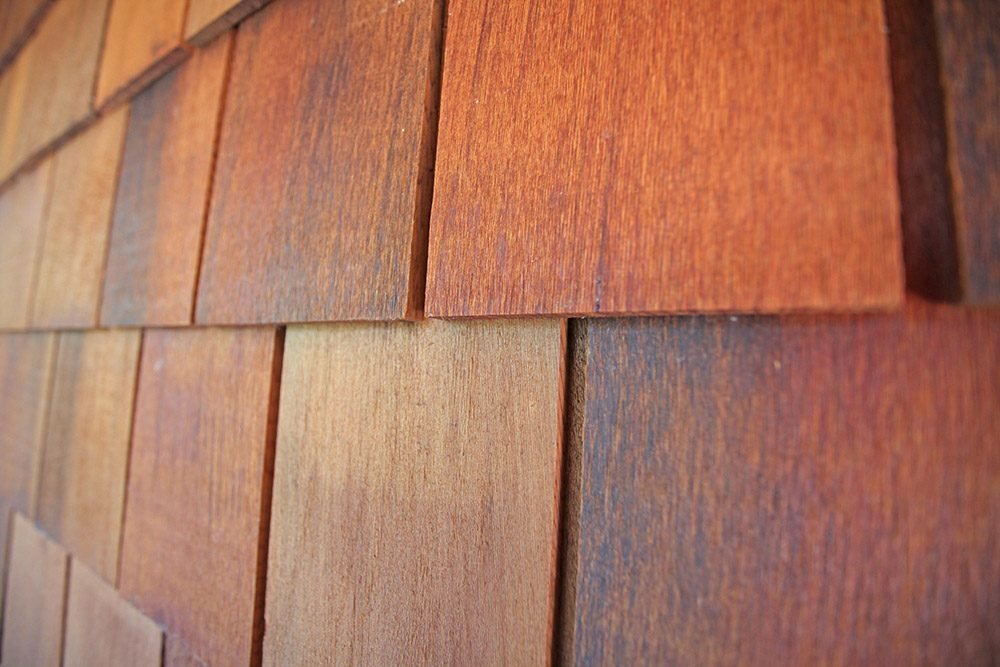Cedar shakes and shingles 101
Cedar Shakes and Shingles 101 is a primer to help you get acquainted with the world of cedar wood shakes and shingles. This article is based on a seminar from Alan Stout at Cedarwood Products. Learn about cedar shake and shingle manufacturing, grading and applications.
10 questions for cedar customers
This guide walks retailers and distributors through the 10 most essential questions to ask a customer to ensure they order the right product and quantity the first time around. Then you can bring that request to us and our team will provide a prompt, competitive bid that delivers exactly what they need.
The fasteners guide for installing cedar shakes and shingles
The most overlooked — and also most crucial — element of any cedar shakes or shingles installation project is fasteners. Not all fasteners are created equal. In fact, these relatively small components of a project are the difference between a successful, decades-long installation, and a project that requires redoing in just a few short years.
Cedar shakes and shingles glossary
The cedar shakes and shingles glossary covers technical and industry terms regarding grading, weathering, maintenance, and more. You’ll also learn about cedar’s natural color and application for various architectural uses.
Preserving the natural color of cedar shakes and shingles
Preserving the natural color of cedar shakes and shingles is possible with various methods and strategies for maintaining the warm and inviting appearance of cedar roofing and siding. Factors influencing cedar's color change, such as sunlight, rainfall, air quality, and regional considerations, are discussed. Methods for preserving cedar's natural color and rejuvenation option are also presented.
Enhancing curb appeal with cedar shakes and shingles
Cedar shakes and shingles are a popular choice for enhancing the curb appeal of homes. Their timeless beauty, natural color, aesthetic versatility, and ability to weather and develop a patina make them an attractive option. Whether you prefer the rustic look of cedar shakes or the uniform appearance of cedar shingles, these roofing materials can elevate the visual impact of your home.
Cedar shakes and shingles: Costs and budgeting considerations
When considering cedar shakes and shingles for roofing, it is important to understand the costs and budgeting considerations involved. Cedar roofing costs can vary based on factors such as the type of cedar, installation, and location. The type of cedar, such as Western red cedar or Eastern white cedar, and the grade of cedar, such as clear cedar or knotty cedar, significantly impact the cost. Installation costs, including labor and complexity, should be considered, as well as long-term maintenance and repair costs.
Cedar shakes and shingles in historic and modern architecture
Cedar shakes and shingles have been a beloved roofing material in both historic and modern architecture. In historic architecture, they preserve tradition, maintain authenticity, and contribute to the longevity of heritage structures. In modern architecture, cedar offers design flexibility, sustainability, and eco-friendliness. It is suitable for various regions and architectural styles, making it a timeless symbol of elegance and innovation.
The pros and cons of using cedar shakes for roofing
Cedar shakes for roofing offer aesthetic appeal, insulation, longevity, sustainability, and resistance to insects and decay. However, they can be costly, require regular maintenance, be vulnerable to severe weather and fire risk, and need expert installation. Consider these pros and cons, along with your specific needs and budget, when deciding on cedar shakes for your roof.
How to choose the best cedar for your shakes and shingles
When choosing cedar for shakes and shingles, consider factors such as grades (clear cedar vs. knotty cedar), wood species (Western red cedar vs. Eastern white cedar), moisture content (green cedar vs. kiln-dried cedar), and shingle vs. shake. Also, take into account environmental considerations, local climate, maintenance requirements, budget, and long-term goals. Consulting with experts and prioritizing sustainability and quality are essential for making an informed decision.
Weathering and aging of cedar shakes: what you need to know
Cedar shakes are known for their beauty and durability, but they are also subject to weathering and aging. This guide explores the natural patina and enhanced texture that weathered cedar develops over time. Factors such as sunlight, rainfall, and air quality influence the weathering process. Effects of weathering include dimensional changes, cracking, moss growth, and resistance to insects and decay. Regular maintenance, including cleaning and sealing, can help preserve the appearance and longevity of weathered cedar shakes. Rejuvenation options such as shake replacement and pressure washing are also discussed. Balancing the weathered aesthetics with roof longevity requires regular inspections and proper maintenance. Overall, understanding weathering and aging processes can help homeowners appreciate the enduring beauty of cedar shake roofs.
Cedar shingle vs. asphalt shingle roofing: A comparison
When deciding between cedar shingle and asphalt shingle roofing, consider factors such as aesthetic appeal, durability, maintenance requirements, weather resistance, environmental impact, cost, insulation, installation expertise, and resale value. Cedar shingles offer natural beauty and longevity but require more maintenance, while asphalt shingles are budget-friendly and low-maintenance. The choice depends on personal preferences, budget, climate, and long-term goals.












